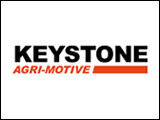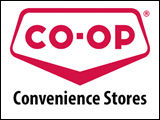Hemp is a word that has been tossed around quite a bit lately in the health food industry – some might even call it a “superfood”. Authors from Manitoba Hemp Harvest have enlightened us as to what this special ingredient is and why we should consider adding it to our diets! They have provided us with the following information:
So what exactly is hemp, you ask? Hemp is a plant. Every part of the hemp plant can be used. There are hundreds, if not thousands of uses for hemp. Food, textiles like rope or clothing, construction material, plastics, fuel, animal bedding – the list goes on and on. Here in Canada hemp is mainly grown for its seed, which is used as food.
Local Success Story
Hemp has played a fundamental role in Canada’s and in Manitoba’s history. (Did you know that the King of England offered free land and seed to immigrants who moved to Canada and grew hemp?) Due to misconceptions, Industrial Hemp was banned for decades until 1998 when local Manitobans helped to get hemp legalized in Canada. Since 1998 the hemp industry has grown tremendously. Majority of hemp acres are grown across Western Canada. The world’s largest hemp foods manufacturer for both branded products, and hemp as an ingredient, is based right here in Manitoba.
Why Hemp Foods
Simply put – hemp foods taste great, are easy to use, and nutritious too! Hemp foods have a slightly nutty taste that compliments pretty much any dish: breakfast, lunch, mid-day pick me ups, dinner, dessert. Visit your local health food store or internet resources for recipe suggestions.
It all starts with Hemp Hearts or shelled hemp seeds. Hemp Hearts taste a bit like a sunflower seed or pine nut. Sprinkle over yogurt, cereal, salad, or pretty much anything. Add to smoothies or recipes.
Hemp Nutrition
Per 30g serving, Hemp Hearts offer 10g protein and 10g omegas. Protein serves numerous functions in the human body from everything to muscle development, healthy skin, digestion, and energy storage. Hemp foods are rich in protein and contain all ten essential amino acids. Amino acids can be classified as either essential or non-essential. Essential amino acids are not created in the body and therefore, must be obtained from food. Fatty acids are the building blocks of fats. There are non-essential and essential fatty acids. Non-essential fatty acids are already present in the body or can be created within the body from the fatty acids we consume. Essential fatty acids are not produced by the body and therefore must be obtained from dietary sources. Examples of essential fatty acids are Omega-3 and Omega-6. Hemp foods contain both omega-3 and omega-6.
The omegas found in hemp foods are balanced by nature. With hemp being a plant, potential sustainability concerns like mercury are not an issue. Included in hemp’s omega profile is stearidonic acid (SDA) and the rare omega-6 Gamma Linolenic Acid (GLA). What’s so great about GLA? Well, GLA has been shown to help with cholesterol, inflammation, skin & hair health, balancing hormones, and general heart health. Hemp foods contain fibre as well. Fibre plays a crucial role in digestive health. Fibre can also be helpful to weight loss, balancing cholesterol, and optimizing blood sugar levels.
Hemp foods also contain magnesium. Magnesium, aka “Mother Nature’s muscle relaxant,” helps muscles turn off their contraction enabling relaxation. Magnesium helps reduce headaches, constipation, stress, cramps and more. Studies show that the majority of North Americans do not get enough magnesium. One 30g serving of Hemp Hearts is equivalent to 76% of the Canadian recommended intake of magnesium!
Recipe: Hemp Heart and Cocount Bars
- 1 1/2 cup medium unsweetened coconut, toasted (baked for 5-10 minutes at 325F)
- 1 cup nut butter (almond, peanut, cashew, etc.)
- 1 cup Hemp Hearts
- 1/3 cup organic pure maple syrup
- 1 teaspoon ground cinnamon
- 1/4 cup organic raisins (optional)
- 3 tablespoons dark chocolate chips (optional)
Combine ingredients and press mixture into a parchment lined paper. Refrigerate at least 3 hours. Once set, remove from pan and cut into 16 squares. Enjoy!
Hemp foods – taste great, easy to use, and nutritious too. What are you waiting for? Try locally grown and Manitoba made today!



